Posted on 07/02/2006 3:48:54 PM PDT by NYer
The 1920s brought a revolution to Mexico, along with the widespread persecution of Catholics.
Missionaries were expelled from the country, Catholic seminaries and schools were closed, and the Church was forbidden to own property. Priests and laymen were told to denounce Jesus and their faith in public; if they refused, they faced not just punishment but torture and death.
During this time of oppression and cruelty, the Knights of Columbus did not retreat in Mexico but grew dramatically, from 400 members in 1918 to 43 councils and 6,000 members just five years later. In the United States at the time, the Knights handed out five million pamphlets that described the brutality of the Mexican government toward Catholics. As a result, the Mexican government greatly feared and eventually outlawed the Order.
Thousands of men, many of whom were Knights, would not bow to these threats or renounce their faith, and they often paid with their lives. They took a stand when that was the most difficult thing they could do, and their courage and devotion have echoed down through the decades.
Here are some of the stories of the Knights of Columbus who joined the ranks of the Mexican Martyrs and were among the 25 victims of religious persecution canonized in 2000 by Pope John Paul II.
|
|
Father Miguel de la Mora de la Mora
|
|
|
|
Father Miguel de la Mora de la Mora of Colima belonged to Council 2140. Along with several other priests, he publicly signed a letter opposing the anti-religious laws imposed by the government. He was soon arrested and, with his brother Regino looking on, Father de la Mora was executed without a trial by a single shot from a military officer as he prayed his rosary. It was Aug. 7, 1927.
|
|
|
Father Pedro de Jesus Maldonado Lucero
|
|
|
|

Father Pedro de Jesus Maldonado Lucero was a member of Council 2419. Forced to study for the priesthood in El Paso, Texas, because of the political situation in Mexico, he returned home after his ordination in 1918 despite the risk. Captured on Ash Wednesday, 1937, while distributing ashes to the faithful, Father Maldonado Lucero was so savagely beaten that one eye was forced from its socket. He died the next day at a local hospital. His tombstone aptly described this martyr in four words: "You are a priest."
|
|
|
Father Jose Maria Robles Hurtado
|
|
|
|
Father Jose Maria Robles Hurtado was a member of Council 1979. Ordained in 1913, he founded the Sisters of the Sacred Heart of Jesus in Guadalajara when he was only 25. On June 25, 1927, he was arrested while preparing to celebrate Mass. Early the next morning, he was hanged from an oak tree, but not before he had forgiven his murderers and offered a prayer for his parish. He went so far as to place the rope around his own neck, so that none of his captors would hold the title of murderer.
|
|
|
|
|
|
|

Father Rodrigo Aguilar Alemán of Union de Tula in Jalisco was a member of Council 2330. After a warrant was issued for is arrest, he took refuge a the Colegio de San Ignacio in Ejutla, celebrating Mass and administering the sacraments. Rather than escape when soldiers arrived, Father Aguilar Alemán remained at the seminary to burn the list of seminary students, and thus protect them from being known. When the soldiers demanded his identity, he told them only that he was a priest. He was taken to the main square of Ejutla, where the seminary was located. He publicly forgave his killers, and then a soldier gave him the chance to save himself by giving the "right" answer to this question, "Who lives?"
Father Aguilar Alemán would be spared if he simply said, "Long live the supreme government."
But he replied, "Christ the King and Our Lady of Guadalupe." The noose that had been secured to a mango tree was tightened, then relaxed twice. Each time it was relaxed, he was asked the same question and each time he gave the same response. The third time the noose was tightened, he died.
|
|
|
|
|
|
|
Father Luis Batiz Sainz was born in 1870, and was a member of Council 2367. On Aug. 15, 1926, at Chalchihuites, Zacatecas, he and three layman -- David Roldan, who was only 19 at the time, Salvador Lara and Manuel Morales -- were put before a firing squad for refusing to submit to anti-religious laws. When Father Batiz Sainz asked the soldiers to free one of the captives, Manuel Morales, who had sons and daughters, Morales wouldn't hear of it.
"I am dying for God," he declared, "and God will care for my children." Smiling, Father Batiz Sainz gave his friend absolution and said: "See you in heaven."
|
|
|
Father Mateo Correa Magallanes
|
|
|
|

Father Mateo Correa Magallanes, who was a member of Council 2140, was arrested and taken to Durango. While in prison, he was ordered by the commanding officer on Feb. 5, 1927, to hear the confessions of his fellow prisoners. Then the commander demanded to know what they had told him. Of course, Father Correa Magallanes wouldn't violate the seal of confession, and so, the next day, he was taken to a local cemetery and executed by the soldiers.
|
|
|
|
|
|
|
|

The relics of six Knights of Columbus canonized by Pope John Paul II in 2000 have begun a tour of the United States.
The six priests – Pedro de Jesus Maldonado Lucero, Miguel de la Mora de la Mora, Jose Maria Robles Hurtado, Luis Batiz Sainz, Rodrigo Aguilar Alemán, and Mateo Correa Magallanes – were martyred for their faith by the Mexican government during the religious persecution in Mexico in the1920s.
“This pilgrimage seeks to promote knowledge of and devotion to the Knights of Columbus priest martyrs of Mexico and all those who sacrificed their lives for their faith during the Mexican persecution,” explained Supreme Knight Carl A. Anderson, who will be attending the opening ceremonies in Dallas.
The U.S. portion of the pilgrimage began March 18 with a procession to the Cathedral Shrine of the Virgin of Guadalupe in Dallas, where a special Mass was celebrated.
The pilgrimage of the relics began in Mexico City in September 2005, to mark the centennial of the Knights of Columbus in Mexico. From there, the reliquary traveled to cities throughout Mexico. After traveling to several major U.S. cities, the pilgrimage will conclude in Orlando at the Knights of Columbus' 124th Supreme Convention in August 2006.
Relics have long been a part of Catholic devotional practice. Since the days of the Apostles, Christians have preserved and honored the physical remains of men and women recognized as saints Previous relic pilgrimages have drawn large numbers of the faithful. In 2003, the Knights co-sponsored the journey of a relic of the Tilma of Tepeyac, the cloth that bears the miraculous image of Our Lady of Guadalupe, which drew more than 150,000 people.
|
Knights Ping!
Interesting era of Mexican politics. But in all matters dealing with Mexico, who got the plata? (Money)


Please FReepmail me if you'd like to be added to or removed from the KofC ping list.
& let's not forget the 52 families.
http://en.wikipedia.org/wiki/Cristero_War
The 1917 Constitution
Five articles of the 1917 Constitution of Mexico were particularly aimed at reducing the influence of the Catholic Church in Mexican life. Article 3 demanded secular education in schools. Article 5 outlawed monastic religious orders. Article 24 forbade public worship outside of church buildings, while Article 27 restricted religious organizations' rights to own property. Finally, Article 130 took away basic civil rights of members of the clergy: priests and religious leaders were prevented from wearing their habits, were denied the right to vote, and were not permitted to comment on public affairs in the press.
There is a great movie starring Henry Fonda as a Priest during the anti clerical pogroms.
It is a marvelous movie, showing the corruption, hipocrasy, treachery, and cruelty of that time.
Thanks! "The Fugitive" starring Henry Fonda. I'll have to look for that.
http://www.stanford.edu/group/wais/Mexico/mexico_grahamgreeneandpersecutionofcatholics7703.html
MEXICO: Graham Greene and the persecution of Catholics
Bienvenido Macario has sent me an article by Fr. James Reuter SJ about Christianity. From it I excerpt what he has says about Graham Greene's The Power and the Glory (1940), a novel which resulted from his visit to Mexico in 1934, described in The Lawless Roads (1939), published in the US under the title Another Mexico. He had converted to Roman Catholicism in 1926, and his novel about anti.Catholic Mexican revolutionaries is an expression of his faith. Here is what Father Reuter says about it:
"Graham Greene, who was a magnificent Catholic author, wrote a book called: Labyrinthine Ways. It did not sell, because nobody knew what "Labyrinthine" meant. They changed the title to The Power and the Glory. Then the book sold. When Hollywood made it into a movie, they called it: "The Fugitive." The first film featured Henry Fonda in the leading role. It was so successful that they did it again, starring Laurence Olivier. It was the story of a young Catholic priest in Mexico, during the stormy days of religious persecution. The year that, in real life, Miguel Pro S.J. was shot and killed by a military firing squad. He died with his arms extended in the form of a cross, calling: "Viva Cristo Rey!" Miguel Pro was a fugitive, and so was the star, in this movie.
He had many faults, failures, weaknesses, sins. He was a mild alcoholic. He was the father of a little girl, born out of wedlock. He was not living with the mother. It happened in a moment of misery and loneliness. The mother of the little girl never called him anything else than "Father". He was constantly running from the police, and from the military, in fear of execution. But he was devoted to the little flock he was supposed to serve. He was saying Mass, hearing confessions, anointing the sick and the dying, bringing God--as best he could--to every Catholic. A military officer, a Communist, knew that he was doing this, and was hunting for him. Finally the priest escaped from Mexico. He went over the border, into safe territory.
The Communist was played by George Scott, a strong actor. He knew that the priest would not refuse a request for the last sacraments, from a man who was dying. So he sent a miserable street vendor with a note for the priest, forged, as if it came from a dying man, asking for confession before he died. The priest went back across the border, with the street vendor, into the trap. There really was a man dying, who needed the sacraments. But after the priest gave him absolution and the viaticum, the military closed in on him. He was tried, convicted, and sentenced for execution. In the area, there was a priest who had abandoned his priesthood, rather than be executed. The fugitive priest, in his prison cell, wanted to confess. The Communist Officer had a secret admiration for this man who was about to die for his faith. He went to the fallen-away priest. But the man would not come, to give the sacraments. He thought it was a trap. So the Communist went back to the young priest, to tell him that the fallen-away priest would not come.
The condemned priest was sitting on the floor of his cell, drinking. It was a little like anesthesia, to brace him for the execution. The Communist sat beside him, on the floor. And the priest said: "You know--it is strange. For Communism to succeed, they must have to work through good men--like you. But in the Catholic Church it is different. God can go on saving his children, even through men who are no good--like me." The soldiers come to march him out to execution. The miserable street vendor, who has received a large sum of money for bringing the priest to the military, is stricken with remorse. He offers the money to the priest. The priest shakes his head and almost runs, in slippers, to his execution. The vendor runs after him, stumbles and falls, and the coins scatter over the courtyard. He is a Judas figure. The priest was humble, because of his own faults. But it made him a martyr. It made him a saint".
RH: The novel seems singularly apposite today when so many priests are charged with straying from the straight and narrow path. Miguel Pro was born in 1891, Under the terror of the Mexican regime of the time of Calles' and Obergon's rule, came years of political and religious persecution. During this period, the Pro family suffered great great financial and personal hardship. Meanwhile Miguel and the other novices of the Jesuit order were also under severe threat of persecution, as Catholic priests and religious were among the targets of the Mexican reign of terror. After a raid of the religious' house, their superiors ordered Miguel and the other novices to escape from Mexico. Miguel's travels took him to diverse countries such as the U.S., Grenada, and eventually Belgium where he was ordained a priest on August 21, 1925. Even though his family could not be physically present at his ordination ceremony, Father Pro was spiritually present with them; blessing their individual photographs one by one.
Even though he sought to hide his internal and physical turmoil from those around him, Father Pro suffered great emotional pain over the constant worry he felt over his family and the physical pain which was caused by stomach troubles. Those around him even noted that at the times he felt the most pain; physical or emotional, that he would seem the most cheerful. Father Pro's physical health weakened despite several operations. In the hope of helping Father Pro regain his health, his superiors granted his wish to return home to Mexico to be nearer to his family. Little did his superiors realise the extent of the trouble that the Church in Mexico faced. In 1926, Father Pro returned to Mexico during the height of political terror; at a time in which the Catholic Church faced great opposition as a result of constitutional amendments and legislation which severely restricted public worship. Any Catholic priest who dared to continue to serve the sacraments risked persecution, torture, arrest and even execution! That was the fate of Father Pro. He has been beatified. The execution of priests disgraced the revolutionary movement. Can Mexican WAISers tell us if Father Pro is remembered?
If I lead, follow me; If I pause, push me; If I retreat, kill me.
When the conquistadors took Mexico from the Aztecs, they essentially applied the Spanish economic and political system to the Viceroyalty of New Spain. This feudal economic system consisted largely of a ruling caste who owned virtually all the land, a caste of artisans and other free but largely landless people, and a caste of eternally impoverished serfs treated as property. The Spanish never developed a Magna Carta (1215), nor did they engage significantly in the nascent merchant economy of the Hanseatic League. In stark contrast to the Anglo-sphere and particularly the United States, the Spanish colonies never developed a profound respect for equality [of opportunity] among men nor of a significant chance of any real socioeconomic mobility.
In the United States, we begin to imbue our children with a sense of patriotism and equal opportunity in grade school. But in a feudal society, people are born into a socioeconomic caste that very few ever leave. This inequality and lack of opportunity leads to a large population of peasant serfs especially likely to fall victim to the allure of communism. Such a fate befell the Mexican people in their 1917 Revolution. Communists win power through promises of wealth and dignity to the poor, who often suffer severely because unlike the rich, they lack the means to escape.
In the case of Mexico, the communists simply exchanged one set of overlords (the old feudal landlords) for a new set of overlords (government agricultural schemers), some of whom were the exact same people. After the peasants rebelled against their anti-clerical jihad, the communists ultimately devolved into the utterly corrupt PRI that we know today.
So how does the Catholic Church fit into this scheme? Well, that's a complicated question. Despite the power of the medieval European ecclesiastical officials, many were so thoroughly corrupted that their sinful simony schemes ignited the Protestant Reformation. Despite some schisms, the Reformation never reached Spain, but it did inspire the more Scriptural grounded Counter-reformation. As part of this movement, the Church initiated the Society of Jesus (Jesuits), a religious order beholden directly to the Roman ecclesiastic without allegiance to secular officials.
The Jesuits provided the closest institution in the Roman Catholic world to the Puritanical ethic that later permeated the Anglo-sphere, particularly America. History repeatedly demonstrates conflicts between the Jesuits and the local ecclesiastical hierarchy. During the Middle Ages and often still in Catholic countries, the temporal officials (kings, princes, and other leaders) played a key role in selecting bishops, abbots, and other members of the ecclesiastical hierarchy. This heavy temporal influence corrupted the majority of the Church, but the Jesuits proved almost immune. The Spanish colonial authorities indeed despised the Jesuits because their devotion to God threatened their authoritarian hegemony.
In this sense, the concept of religious freedom--even for practitioners of Catholicism--never developed in the Spanish colonies. Temporal authorities suppressed the Jesuits, sometimes violently, and expelled them from Mexico in 1767. In stark contrast to the almost uniquely American tradition of free exercise of religion, Mexico never has allowed for true religious freedom and merely allows the Church to exist as a tool of the State and its controlling oligarchy.
The Church condemns communism outside monasteries, nunneries, and similar voluntary religious communities. The persecution that sparked the Cristero rebellion only exemplifies the evil inherent in atheistic autocratic communism, whether in Mexico, Russia, China, Vietnam, Cambodia, Zimbabwe, or Venezuela.
God bless America--the Land of the Free and the Home of the Brave.
I missed this! I was very upset when I read in the daily news that the relics were here.
| Father Miguel de la Mora de la Mora | Father Pedro de Jesus Maldonado Lucero |
| Father Jose Maria Robles Hurtado | Father Rodrigo Aguilar Alemán |
| Father Luis Batiz Sainz | Father Mateo Correa Magallanes |
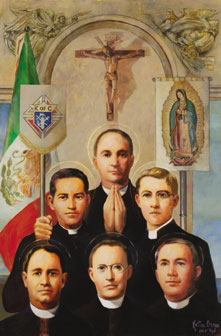
Portrait of the Mexican Martyrs at the Knights of Columbus Museum in New Haven.
Missionaries were expelled from the country, Catholic seminaries and schools were closed, and the Church was forbidden to own property. Priests and laymen were told to denounce Jesus and their faith in public; if they refused, they faced not just punishment but torture and death.
During this time of oppression and cruelty, the Knights of Columbus did not retreat in Mexico but grew dramatically, from 400 members in 1918 to 43 councils and 6,000 members just five years later. In the United States at the time, the Knights handed out five million pamphlets that described the brutality of the Mexican government toward Catholics. As a result, the Mexican government greatly feared and eventually outlawed the Order.
Thousands of men, many of whom were Knights, would not bow to these threats or renounce their faith, and they often paid with their lives. They took a stand when that was the most difficult thing they could do, and their courage and devotion have echoed down through the decades.
Here are some of the stories of the Knights of Columbus who joined the ranks of the Mexican Martyrs and were among the 25 victims of religious persecution canonized in 2000 by Pope John Paul II.
Father Miguel de la Mora de la Mora
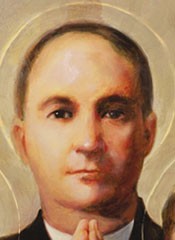
Father Miguel de la Mora de la Mora of Colima belonged to Council 2140. Along with several other priests, he publicly signed a letter opposing the anti-religious laws imposed by the government. He was soon arrested and, with his brother Regino looking on, Father de la Mora was executed without a trial by a single shot from a military officer as he prayed his rosary. It was Aug. 7, 1927.
Father Pedro de Jesus Maldonado Lucero
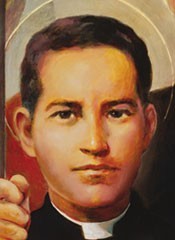
Father Pedro de Jesus Maldonado Lucero was a member of Council 2419. Forced to study for the priesthood in El Paso, Texas, because of the political situation in Mexico, he returned home after his ordination in 1918 despite the risk. Captured on Ash Wednesday, 1937, while distributing ashes to the faithful, Father Maldonado Lucero was so savagely beaten that one eye was forced from its socket. He died the next day at a local hospital. His tombstone aptly described this martyr in four words: "You are a priest."
Father Jose Maria Robles Hurtado
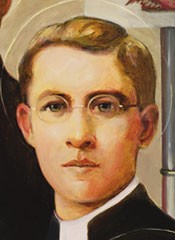
Father Jose Maria Robles Hurtado was a member of Council 1979. Ordained in 1913, he founded the Sisters of the Sacred Heart of Jesus in Guadalajara when he was only 25. On June 25, 1927, he was arrested while preparing to celebrate Mass. Early the next morning, he was hanged from an oak tree, but not before he had forgiven his murderers and offered a prayer for his parish. He went so far as to place the rope around his own neck, so that none of his captors would hold the title of murderer.
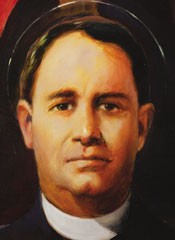
Father Rodrigo Aguilar Alemán of Union de Tula in Jalisco was a member of Council 2330. After a warrant was issued for is arrest, he took refuge a the Colegio de San Ignacio in Ejutla, celebrating Mass and administering the sacraments.
Rather than escape when soldiers arrived, Father Aguilar Alemán remained at the seminary to burn the list of seminary students, and thus protect them from being known. When the soldiers demanded his identity, he told them only that he was a priest.
He was taken to the main square of Ejutla, where the seminary was located. He publicly forgave his killers, and then a soldier gave him the chance to save himself by giving the “right” answer to this question, “Who lives?”
But he replied, “Christ the King and Our Lady of Guadalupe.” The noose that had been secured to a mango tree was tightened, then relaxed twice. Each time it was relaxed, he was asked the same question and each time he gave the same response. The third time the noose was tightened, he died.
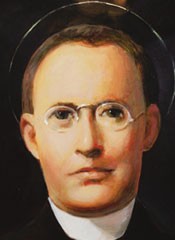
Father Luis Batiz Sainz was born in 1870, and was a member of Council 2367. On Aug. 15, 1926, at Chalchihuites, Zacatecas, he and three layman – David Roldan, who was only 19 at the time, Salvador Lara and Manuel Morales – were put before a firing squad for refusing to submit to anti-religious laws. When Father Batiz Sainz asked the soldiers to free one of the captives, Manuel Morales, who had sons and daughters, Morales wouldn’t hear of it.
“I am dying for God," he declared,” and God will care for my children.” Smiling, Father Batiz Sainz gave his friend absolution and said: “See you in heaven.”
Father Mateo Correa Magallanes
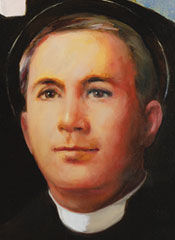
Father Mateo Correa Magallanes, who was a member of Council 2140, was arrested and taken to Durango. While in prison, he was ordered by the commanding officer on Feb. 5, 1927, to hear the confessions of his fellow prisoners. Then the commander demanded to know what they had told him. Of course, Father Correa Magallanes wouldn't violate the seal of confession, and so, the next day, he was taken to a local cemetery and executed by the soldiers.
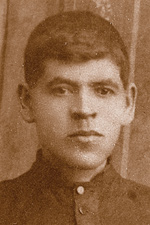 |
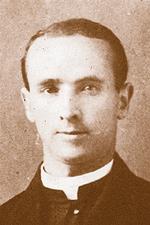 |
| Padre José T. Rangel Montaño | Padre Andrés Solá Molist |
In 2005, two other Knights, also Mexican Martyrs, were beatified.
Father Jose Trinidad Rangel Montaño, a diocesan priest from Leon and member of Council 2484, and Claretian Father Andres Sola Molist, a Spaniard, and member of Council 1963. Both were executed for their faith in Rancho de San Joaquin, Mexico, in April 1927.
These men, and many thousands more, paid the ultimate sacrifice for their Catholic faith in Mexico during the 1920s and 1930s. But throughout that period, the Knights of Columbus in Mexico kept the faith and hundreds gave their lives to protect their beliefs, some as martyrs and others in the armed Cristero movement.
Always an advocate of peaceful struggle against the government, Pius XI singled out the Knights of Columbus for praise in his 1926 encyclical Iniquis Afflictisque, writing: “First of all we mention the Knights of Columbus, an organization which is found in all states of the [Mexican] Republic and fortunately is made up of active and industrious members who, because of their practical lives and open profession of the Faith, as well as by their zeal in assisting the Church, have brought great honor upon themselves.”
Mexican Knights, and the entire Church in Mexico, were consistently supported by the Knights in the United States who, in addition to distributing literature that informed the American people of the plight of the Church in Mexico, also lobbied President Calvin Coolidge to bring pressure to end the persecution.
In 1926, Coolidge met with a delegation of Knights including Supreme Knight James Flaherty, future Supreme Knight Luke Hart and Supreme Director William Prout. Coolidge affirmed his administration’s commitment to bringing about a resolution to the problems in Mexico.
Though the Knights had been outlawed in Mexico – even the Order’s Columbia magazine was temporarily banned – the Knights of Columbus survived. In 2005, at the centennial convention in Mexico City, Supreme Knight Carl Anderson declared that Mexican Knights are “second to none” in their commitment to “our founding ideals and their devotion to the Catholic faith.”
For more on the Mexican Martyrs see the following articles from The Online Edition of Columbia magazine:
St. José María Robles Hurtado
KofC Ping
anti-communism ping
A blast from the past! Thanks
Disclaimer: Opinions posted on Free Republic are those of the individual posters and do not necessarily represent the opinion of Free Republic or its management. All materials posted herein are protected by copyright law and the exemption for fair use of copyrighted works.